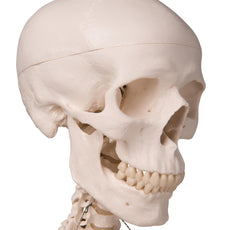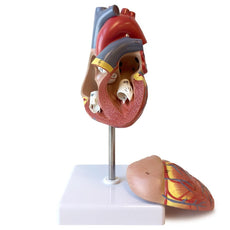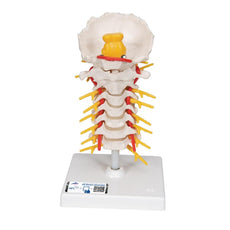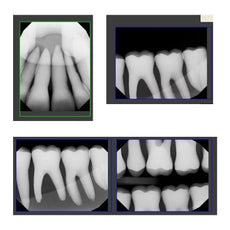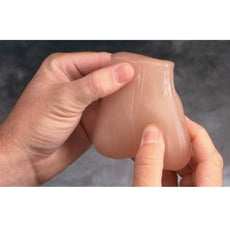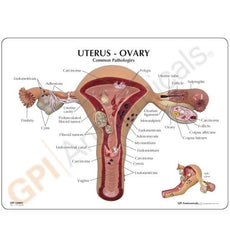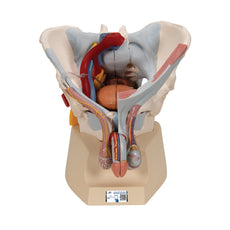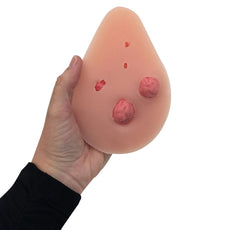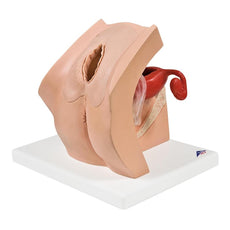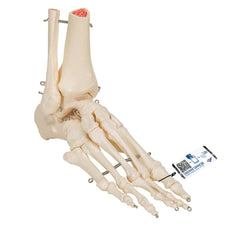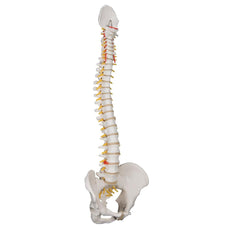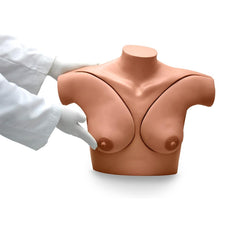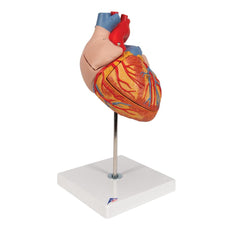Your shopping cart is empty.
3D Printed Metastatic Malignant Melanoma
Item # MP2117Need an estimate?
Click Add To Quote

-
by
A trusted GT partner -
3D Printed Model
from a real specimen -
Gov't pricing
Available upon request
3D Printed Metastatic Malignant Melanoma
Clinical History
A 65-year old male with presents with pain in his left groin. He has a history
of skin melanoma on his left foot treated with surgical resection and radiotherapy. On examination, he is cachexic
with a hard, enlarged liver and has a discharging sinus in the left groin surrounded by black nodules. He is
admitted and dies from a hospital-acquired pneumonia.
Pathology
The specimen is the patient’s proximal right femur sawn longitudinally to display the
cut surface. The medullary cavity contains many deposits of tumour tissue varying in colour from a pale brown to
black. Cancellous bone has been completely destroyed by the larger deposits, which appear dark and measure up to 3
cm in maximum diameter. Elsewhere pale brown tumour infiltrates the marrow cavity diffusely. Cortical bone has been
spared, although at the junction of the shaft and neck, medially the cortical bone is discoloured and thickened.
These are metastatic deposits from a melanoma of the skin.
Further Information
Melanoma is a malignant skin cancer associated with exposure to UV radiation
in sunlight or tanning beds. Other risk factors for developing melanoma include fair complexion, presence of large
number of melanocytic naevi, severe sunburn as a child and immunosuppression. It accounts for around 5% of all skin
cancer diagnosis but has the highest mortality rate of all skin cancers. Melanomas typically occur in sun exposed
areas as a pigmented lesion with irregular borders, variegated colour, an asymmetrical shape and which evolves of
time. There are multiple mutations common in melanoma. Loss of cell cycle control gene from mutation in CDKN2A gene.
Mutations in pro-growth signalling pathways such as BRAF and PI3K mutations are seen frequently in melanomas, as
well as mutations that activate telomerase such as the TERT gene. Recognition that melanoma antigens activate host
immune responses has led to promising immunotherapy, which enhances host T-cell identifying of these
antigens.
The most common sites for metastasis of malignant melanoma are the lungs, liver, brain and bone as well
as regional lymph nodes. Bone metastases are found in 25-50% of metastatic melanoma. The axial skeleton is more
frequently affected by metastatic melanoma spread. These metastatic deposits cause pain and even pathological
fractures. The probability of metastatic spread depends on the stage of the primary tumour, which is based on tumour
depth, mitotic activity and ulceration of the skin as well as node and solid organ involvement.
Diagnosis of
melanoma is made with excisional biopsy. Investigation for bone metastasis is done using blood test (raised Alkaline
phosphatase, calcium and LDH) and radiological investigations most commonly X-ray and CT but MRI and PET scan may
also be used. Treatment depends on the stage or the tumour as well as the immune profile of the melanoma. Treatment
usually involves surgical resection, chemotherapy, immunotherapy, radiotherapy or more commonly a combination of
treatments.
 Handling Guidelines for 3D Printed Models
Handling Guidelines for 3D Printed Models
GTSimulators by Global Technologies
Erler Zimmer Authorized Dealer
The models are very detailed and delicate. With normal production machines you cannot realize such details like shown in these models.
The printer used is a color-plastic printer. This is the most suitable printer for these models.
The plastic material is already the best and most suitable material for these prints. (The other option would be a kind of gypsum, but this is way more fragile. You even cannot get them out of the printer without breaking them).The huge advantage of the prints is that they are very realistic as the data is coming from real human specimen. Nothing is shaped or stylized.
The users have to handle these prints with utmost care. They are not made for touching or bending any thin nerves, arteries, vessels etc. The 3D printed models should sit on a table and just rotated at the table.










